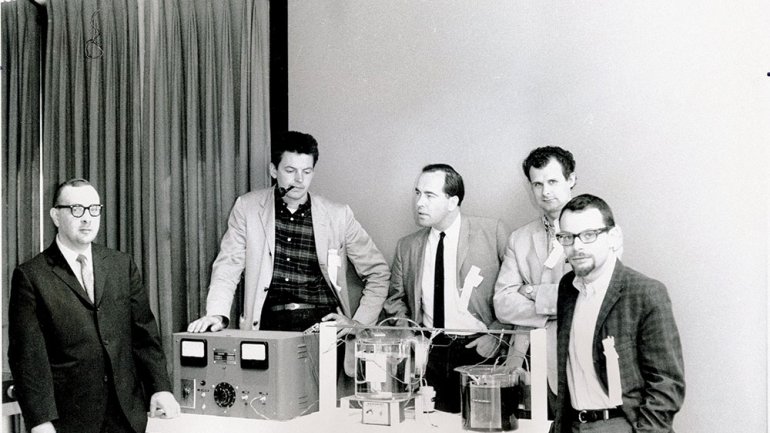Still Current
Still Current
“Rich in texture and detail, but too heavy to wear.” That’s what the jurors of the 1962 “Young Americans” competition noted about Stanley Lechtzin’s cast gold pin. The design earned the jewelry artist a bronze medal, but Lechtzin took the feedback to heart. He began to experiment with applications from the fields of electrochemistry and physics. Within a year, at the First World Congress of Craftsmen, he had demonstrated his new use for a 150-year-old technology: electroforming.
Lechtzin is recognized as a pioneer for using electroforming in the creation of lightweight jewelry and small objects with intricate, entwined forms and contorted metal surfaces. He has taught this process for more than 50 years (and, since 1988, computer-aided design, or CAD, for which he also is known) at Tyler School of Art at Temple University in Philadelphia.
For our jewelry issue, we asked the artist, an American Craft Council Fellow, to help us understand the roots of the electroforming process in jewelry fabrication.
So what exactly is electroforming?
“Electroforming is an electrolytic process by which one deposits metal on a matrix, which is later removed in whole or in part,” Lechtzin says. The matrix – the desired form, made of a material such as wax or expanded polystyrene – is placed in a metallic-salt solution. When electric current is applied, metal is electro-deposited onto the matrix, creating a near-perfect shell. The matrix can then be melted or burned out. Unlike electroplating, where metal adheres to and becomes a permanent part of the form, electroforming is used to create entirely new metal objects.
Where and when did it originate?
The principles involved can be traced back to 1833 and the work of English scientist Michael Faraday, whose experiments led to the growth of the metal plating industry. From there, electroforming was used for all types of industrial applications throughout the 19th and 20th centuries – including vinyl LP records made from electroformed nickel press masters.
In electroforming’s 19th-century heyday, Lechtzin says, people dreamed of draining the Suez Canal, filling it with a metallic-salt solution, and electroforming submarines. (It never happened, obviously – but it wasn’t inconceivable.) Since that time, “electroforming hasn’t changed significantly,” Lechtzin says, “but it has been refined.” Modern chemistry has enhanced the process, he notes, enabling electroforms that are technically superior to those possible even 20 years ago.
What are some of its benefits – or limitations?
Electroforming “allows for some very complex structures,” Lechtzin says. Artists can use it to craft very thin, precise, and sturdy metal forms, which are also extremely lightweight.
While electroforming with silver and gold does involve hazardous chemicals, including sulfuric acid and cyanide, Lechtzin doesn’t view that as a limitation. “If one takes the time to understand the process intuitively, there will never be a situation where something goes wrong or fails,” he says, adding, “It’s no more hazardous than most other processes one encounters in the crafts.”
And what about electroforming today?
Throughout the 1970s and ’80s, electroforming as an arts process exploded. Widespread enthusiasm for the technique tapered off in the early 1990s, however, and Lechtzin himself left it behind as 3D printing and computer-aided design applications became available. But he surmises that things go in cycles when it comes to technology.
“There’s been no indication that electroplating is going to disappear, so as long as electroplating is in common use for industrial purposes, and because electroforming is an offshoot, it will be with us,” Lechtzin says. Tyler, for its part, maintains a state-of-the-art electroforming lab where students continue to experiment with its application in contemporary jewelry and sculpture.
Pushed to predict what he – or the field – might experiment with in the future, Lechtzin seems bemused. “I’m asked that frequently based upon my history, and at this point I have difficulty seeing into the future, as I had been able to in years gone by,” he says. “We will be surprised. I will be surprised.”
Jessica Shaykett is the American Craft Council librarian.




